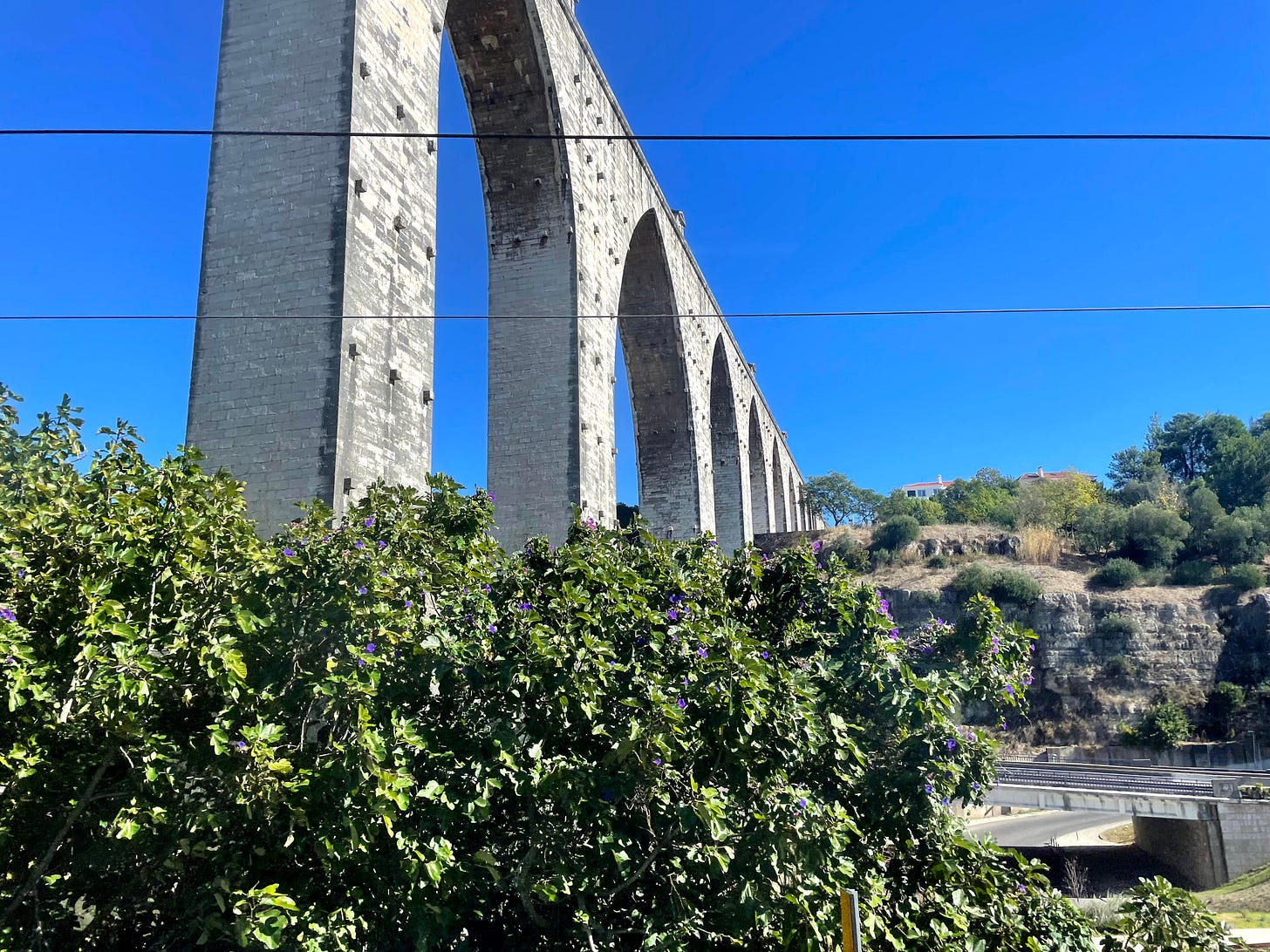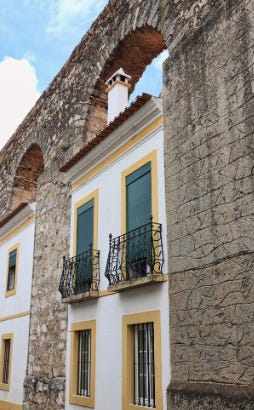On Tuesday I woke at 06:00. I went to the sink, turned on the faucet, and nada! When I left for a doctor’s appointment, at 07:45 I asked Denise to check with our neighbor. As I left the hospital at 08:30, I called Denise and learned that no one in the building had water. As my journey home involved walking past the water company offices, I would have to put on my big girl language pants to inquire.
It Made me Wonder
If you are wondering, I was able to explain to the customer service rep that I didn’t have water, “Não tenho aqua.” In fact, our entire apartment building didn’t have water. “Tudo edifício … Apartamentos, não aqua.” (Before you fluent Portuguese speakers shake your head in disgust, remember I am not seeking perfection…simple “oh that’s what she means” will do. And it must have worked, our water was restored before noon.)
Anyway, it got me thinking about water. More specifically, about those tall aqueducts, we have seen as we have traveled about Portugal. The first we observed was in Óbidos, then again in Évora and Coimbra. I knew aqueducts moved massive amounts of water into Southern California, but I never saw anything that looked like the ones here. It made me wonder and thus started my research.
First Came the Romans
I learned the Romans built the first aqueducts. In fact, the earliest dates back to 312 B.C. Just as I marveled at the engineering genius that was able to construct the Igreja de São Francisco without a computer, I can’t imagine how:
The first aqueduct could carry water for 43 miles;
They figured out how to move water uphill by creating a big dip (siphon) that would cause the water to drop so quickly that it ran uphill;
They thought to create sedimentation tanks with access points for workers to remove impurities; and
Since pipes were more expensive, they constructed concrete troughs atop tall arches to move the water along.
I also learned that California copied the Romans two millennia later:
In 1904, the inadequacy of the Los Angeles River as a watersupply for the growing city's 175,000 people came to a head. For 10 straight days that summer, water consumption in Los Angeles exceeded river capacity by more than 4 million gallons (about 15,141,647 liters). Finding an alternative water source became a top priority, and with an abundance of water just outside the city, aqueducts proved to be the answer…So L.A. went about building a 226-mile (364-km) aqueduct to carry water from Owens Valley into the city. The methods developed in ancient Rome stood the test of time, and the L.A. engineers constructed underground pipes and siphons to deliver water by way of gravity. — How Stuff Works

Portuguese Aqueducts
The Moors also developed aqueducts, so it should not come as a surprise that we would find excellent examples still dotting the Portuguese landscape. One of the oldest, the Aqueduto de São Sebastião in Coimbra dates back to the late 16th century. If you want to learn more about these marvels of ancient and modern engineering you can visit the Museum of Water in Lisbon. And don’t forget to take a stroll atop the Águas Livres Aqueduct for breathtaking views of the city. Until then, you can enjoy a glass of water while you watch the following video from the comforts of your home.






Excellent post. I am continually amazed at the engineering marvels of the ancient world!
Great article Nancy. We were driving to Lisbon from Cascais to return our rental car and I took the wrong turn and realized I was going over the Pont 25 de Abril bridge. 🙀🙀🙀🙀 As a result when we were finally turned around we got to see aqueduct you wrote about. In Tomar up by castle they too have a huge aqueduct.